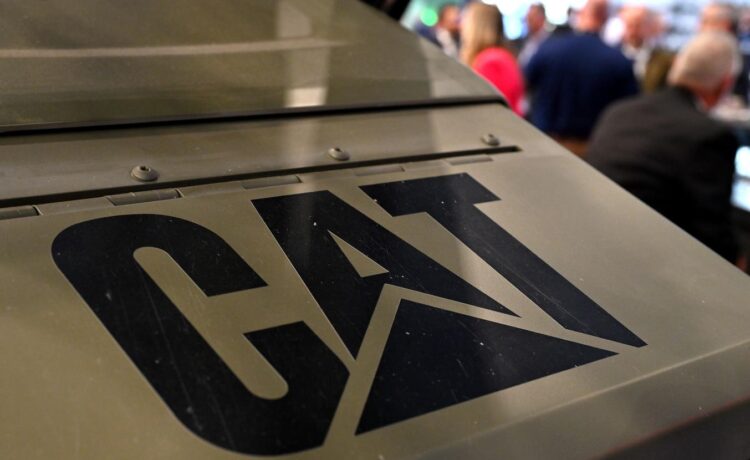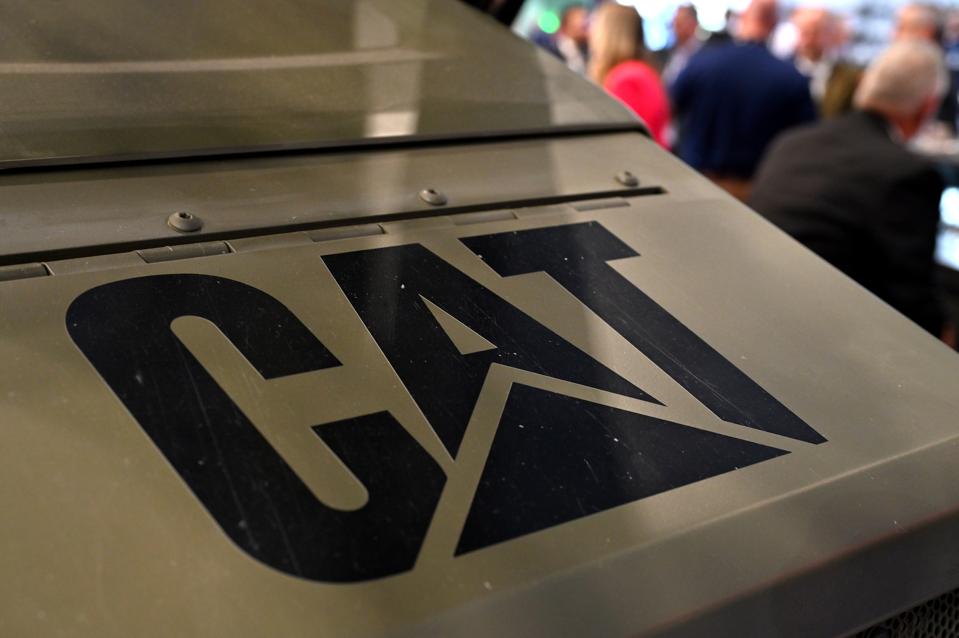LONDON, ENGLAND – SEPTEMBER 09: The CAT, Caterpillar company logo is displayed during the Security Equipment International (DSEI) at London Excel on September 10, 2025 in London, England. (Photo by John Keeble/Getty Images)
Getty Images
Caterpillar stock (NYSE: CAT) has surged 16% in a month, driven by strong fundamentals, including robust demand and a substantial order backlog that signals strong business momentum and future revenue. This upward movement is reinforced by positive technical momentum, as the stock reached new all-time highs. But given this significant rise, how does CAT stock compare to its peers, specifically in terms of size, valuation, growth, and margins?
- CAT’s operating margin of 18.2% is robust, although lower than many competitors – trailing behind ALSN (31.3%).
- CAT’s revenue growth of -4.9% over the previous 12 months is negative, falling short of ALSN, TEX, ASTE, but surpassing DE.
- CAT’s stock has increased by 24.5% over the past year and is trading at a PE of 23.9, while competitors like ASTE have provided better returns.
As a brief overview, Caterpillar supplies construction and mining equipment, engines, industrial turbines, and financial services, including leases and loans, across various sectors.
Now, if you seek an upside with less volatility than holding an individual stock, consider the High Quality Portfolio. It has comfortably outperformed its benchmark—a combination of the S&P 500, Russell, and S&P MidCap indexes—and has achieved returns exceeding 91% since its inception. Why is that? As a group, HQ Portfolio stocks provided better returns with less risk versus the benchmark index; less of a roller-coaster ride, as evident in HQ Portfolio performance metrics. Separately, see – CoreWeave Stock To $250?
Why does this matter? CAT has just increased by 15.6% in one month – comparing peers provides context on stock performance, valuation, and financials – emphasizing whether it is genuinely outperforming, lagging behind, and ultimately – can this trend persist? Read Buy or Sell CAT Stock to determine if Caterpillar remains a quality investment. Additionally, there is always a risk of decline after a significant rally – observe how the stock has dropped and bounced back in the past through the CAT Dip Buyer Analysis perspective.
Revenue Growth Comparison
Trefis
Operating Margin Comparison
Trefis
CAT PE Ratio Comparison
Trefis
Investing in a single stock without comprehensive analysis can be risky. Consider the Trefis Reinforced Value (RV) Portfolio, which has outperformed its all-cap stocks benchmark (combination of the S&P 500, S&P mid-cap, and Russell 2000 benchmark indices) to produce strong returns for investors. Why is that? The quarterly rebalanced mix of large-, mid-, and small-cap RV Portfolio stocks provided a responsive way to make the most of upbeat market conditions while limiting losses when markets head south, as detailed in RV Portfolio performance metrics.



